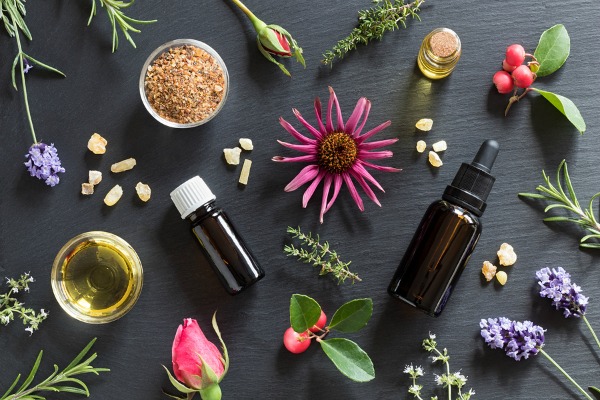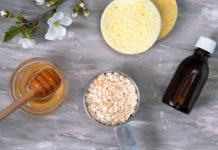
Panic attacks are no small feat. They’re scary, uncomfortable and can interfere with your everyday life. If you suffer from anxious episodes, I want to share 7 home remedies for anxiety and panic attacks so you can get through your days with more ease. Please note that I’m not a doctor, and if you think you’re suffering from panic attacks, you must consult a professional as soon as possible to rule out any other medical conditions first, but I’m here to let you know some tips that may help you with a panic attack at home.
What is a Panic Attack?
If you’ve ever experienced a panic attack, you know just how scary they can be. A panic attack is the sudden onset of extreme anxiety and fear that escalates within minutes. Common panic attack symptoms include accelerated heart rate or palpitations, trembling or shaking, shortness of breath, a choking feeling, chest pain or discomfort, chills or heat sensations, feeling dizzy or faint, numbness, fear or losing control, and even fear of death.
Panic attacks may be a one-time occurrence, but for many people, they happen again and again. It’s important to get to the root of what causes a panic attack so you can do your best to remedy them before and when they happen. Panic attacks can occur for a number of reasons including severe stress or loss (of a loved one, of a job, etc.), chronic worry, or being in crowded or overwhelming situations, such as speaking in front of a big group. They can also be a symptom of an anxiety disorder.
Luckily, there are quite a few natural remedies for anxiety and panic attacks that can help you through your roughest days.
Essentials Oils for Panic Attacks
Panic attacks can instill unease and anxiety in whoever they effect. If you want to calm yourself naturally, essential oils are one of the best ways to do it. Panic attacks can be extremely crippling, to the point where you may want to stay inside your house because you’re scared you’ll have one in public. Fearing you’ll suffer another attack is really stressful, and this is where certain essential oils can offer relief with their calming properties.
Essential oils like lavender, frankincense, bergamot, vetiver, rose oil, peppermint, clary sage, Roman chamomile, sandalwood and ylang ylang instill calmness and help you relax. If you feel an anxiety or panic attack coming on, you can inhale any of these oils directly from a tissue or from the bottle to help you remedy it before it starts. Just make sure to close your eyes as some of them might sting.
Breathing Exercises for Panic Attacks
If you want to stop a panic attack in its tracks, breathing exercises will be one of your most promising strategies. When you have an anxiety attack, your breaths may become short and it might feel like you can’t catch your breath.
Healthy breathing can help calm your mind and body, and prevent hyperventilation. Just keep in mind that breathing exercises take practice, so the more you do them, the easier you’ll be able to calm yourself down during a panic attack. Here are 3 breathing exercises to start practicing now.
- Deep Breathing. Deep breathing is one of the most common breathing techniques for anxiety, but it’s not always easy for everyone. It does take practice, but when you get used to it, you’ll be able to do it with ease. Find a char to sit down in and put your arms on the armrests. Take a deep breath in through your nose, lasting for about 5 seconds, hold the breath for 3 seconds, and breathe out through your mouth for 7 seconds. Repeat 10 times, and as you get more comfortable with it, you can repeat up to 20 times.
- CO2 Re-Breathing. If you’ve been hyperventilating, this breathing technique rebalances your oxygen and carbon dioxide levels to reduce the severity of your panic attack. Cup your hands over your mouth, and breathe into them slowly and deeply. Take normal-length breaths and repeat 5 to 10 times.
- Alternate Nostril Breathing. This breathing technique is a little more advanced, but like with all the other techniques, practice makes perfect. Find a comfortable position, preferably a meditative position if you can. Hold your thumb over your right nostril and breathe in through your left nostril. Once you’ve reached the peak of inhalation, place your right ring finger over your left nostril and exhale through your right nostril. Repeat this 3 to 5 times.
Relaxation Techniques for Panic Attacks
If you’re experiencing a panic attack, the last thing you feel is relaxed. It’s important to teach yourself how to get into a relaxed state and remedy the symptoms that come along with the attack. First of all, it’s essential to realize that you’re having a panic attack and not a heart attack. Once your mind recognizes this, you can accept that this feeling is temporary and will only last a short period of time.
Once you’ve done that, it will be much easier to focus on relaxation techniques that will help combat your symptoms. Here are some techniques you may find helpful.
- Focus on an object. During a panic attack, find one object and focus all your attention on it. Note everything you can about it (patterns, colors, size, etc.) to yourself. This technique has the potential to take your mind off your panic attack and help your symptoms subside.
- Visualize your happy place. If you’re in a safe place where you can close your eyes, try to relax and take yourself to your happy place. Perhaps it’s on a white sand beach with the sun beaming down, or in your grandparents’ backyard cuddled up by a bon fire and watching the leaves fall. Wherever it is for you, take yourself there in your mind and picture the details as much as possible.
- Muscle relaxation. Similar to breathing techniques, you’ll want to practice muscle relaxation before you actually experience a panic attack. Muscle relaxation techniques help to control your body’s response to a panic attack. Focus on one muscle at a time and consciously relax them, starting with something small like your fingers, then hands, then arms. Work your way through your body until all your muscles are relaxed as they can be.
If you suffer from panic attacks, try these home remedies to relax, and calm your body and mind. It may take time and practice, but you’ll be glad you started sooner than later.
















